- 型号: 293D226X0020D2TE3
- 制造商: Vishay
- 库位|库存: xxxx|xxxx
- 要求:
| 数量阶梯 | 香港交货 | 国内含税 |
| +xxxx | $xxxx | ¥xxxx |
查看当月历史价格
查看今年历史价格
293D226X0020D2TE3产品简介:
ICGOO电子元器件商城为您提供293D226X0020D2TE3由Vishay设计生产,在icgoo商城现货销售,并且可以通过原厂、代理商等渠道进行代购。 293D226X0020D2TE3价格参考。Vishay293D226X0020D2TE3封装/规格:钽电容器, 22µF 模制 钽电容器 20V 2917(7343 公制) 700 毫欧。您可以下载293D226X0020D2TE3参考资料、Datasheet数据手册功能说明书,资料中有293D226X0020D2TE3 详细功能的应用电路图电压和使用方法及教程。
| 参数 | 数值 |
| 产品目录 | |
| 描述 | CAP TANT 22UF 20V 20% 2917钽质电容器-固体SMD 22uF 20volts 20% D case Molded |
| ESR | 2.1 Ohms |
| ESR(等效串联电阻) | 700 毫欧 |
| 产品分类 | |
| 品牌 | Vishay / SpragueVishay Sprague |
| 产品手册 | |
| 产品图片 |
|
| rohs | 符合RoHS无铅 / 符合限制有害物质指令(RoHS)规范要求 |
| 产品系列 | 钽电容器,钽质电容器-固体SMD,Vishay / Sprague 293D226X0020D2TE3TANTAMOUNT® 293D |
| 数据手册 | |
| 产品型号 | 293D226X0020D2TE3293D226X0020D2TE3 |
| 不同温度时的使用寿命 | - |
| 产品 | Tantalum Solid Standard Grade - Other Various |
| 产品培训模块 | http://www.digikey.cn/PTM/IndividualPTM.page?site=cn&lang=zhs&ptm=7376http://www.digikey.cn/PTM/IndividualPTM.page?site=cn&lang=zhs&ptm=7437 |
| 产品目录绘图 |
|
| 产品目录页面 | |
| 产品种类 | 钽质电容器-固体SMD |
| 其它名称 | 718-1063-1 |
| 制造商尺寸代码 | D |
| 制造商库存号 | D Case |
| 包装 | 剪切带 (CT) |
| 商标 | Vishay / Sprague |
| 商标名 | TANTAMOUNT |
| 外壳代码-in | 2917 |
| 外壳代码-mm | 7343 |
| 外壳宽度 | 2.8 mm |
| 外壳长度 | 7.3 mm |
| 大小/尺寸 | 0.287" 长 x 0.169" 宽(7.30mm x 4.30mm) |
| 安装类型 | 表面贴装 |
| 容差 | 20 %±20% |
| 封装 | Reel |
| 封装/外壳 | 2917(7343 公制) |
| 封装/箱体 | 2917 (7343 metric) |
| 工作温度 | -55°C ~ 125°C |
| 工作温度范围 | - 55 C to + 85 C |
| 工厂包装数量 | 500 |
| 引线间距 | - |
| 损耗因数DF | 6 |
| 标准包装 | 1 |
| 漏泄电流 | 4.4 uA |
| 特性 | 通用 |
| 电压-额定 | 20V |
| 电压额定值 | 20 V |
| 电容 | 22 uF22µF |
| 端接类型 | SMD/SMT |
| 类型 | 模制 |
| 系列 | 293D |
| 纹波电流 | 0.2 A |
| 高度 | 3.1 mm |
| 高度-安装(最大值) | 0.122"(3.10mm) |

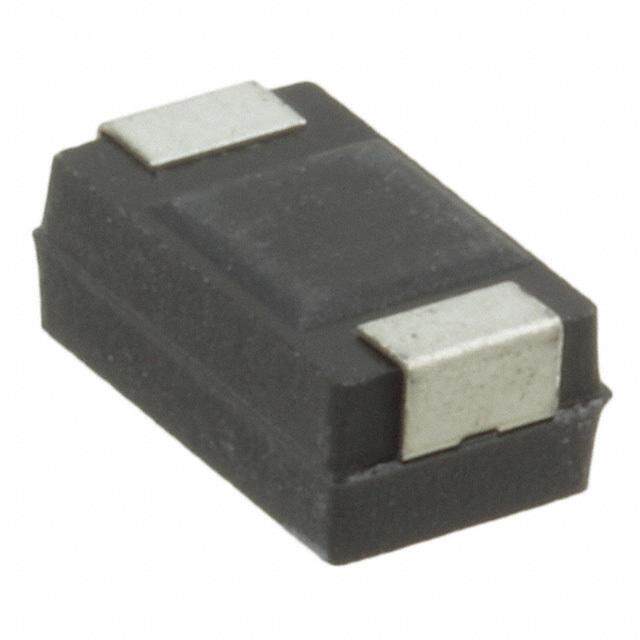
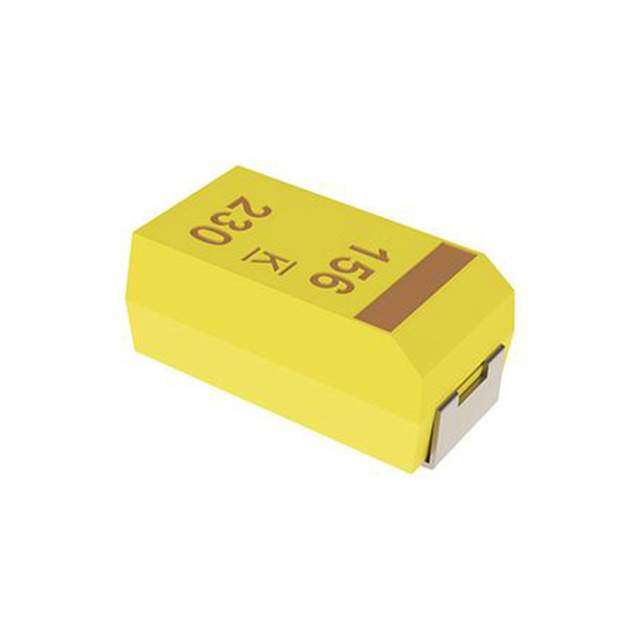
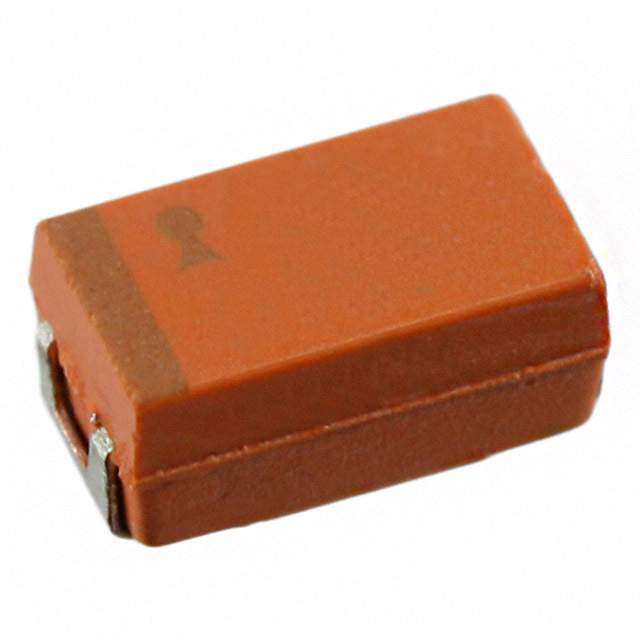

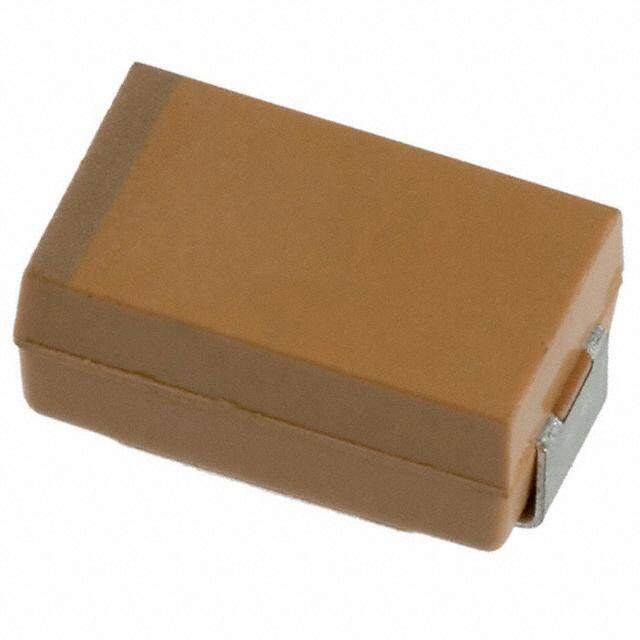
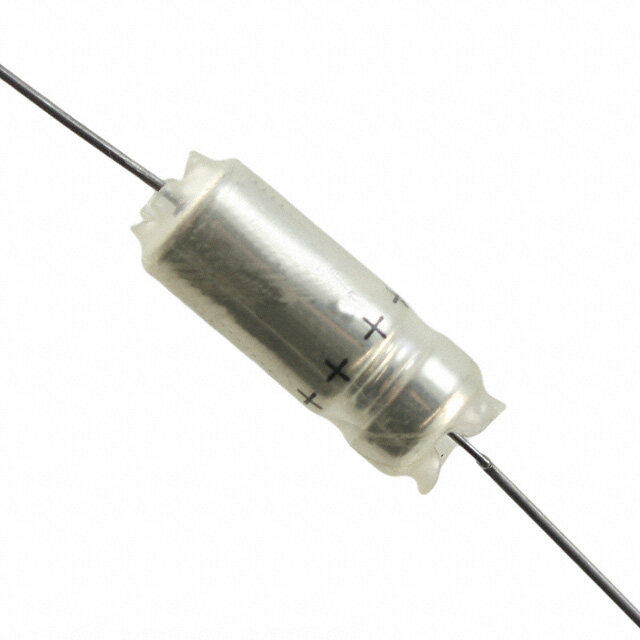
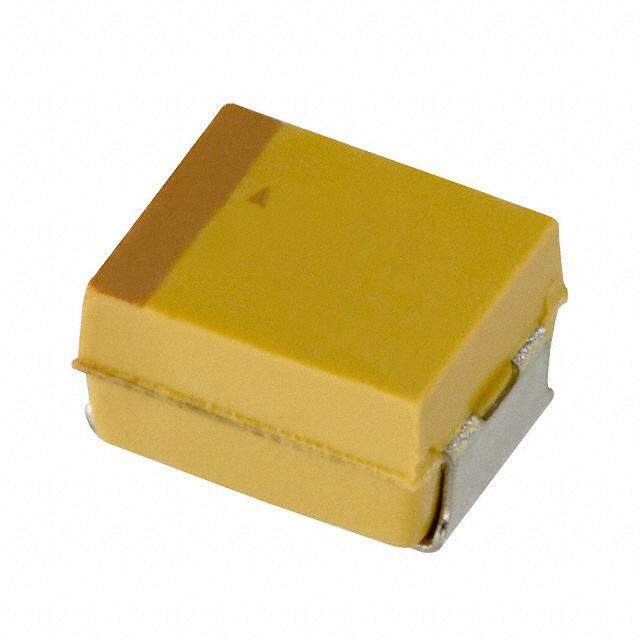
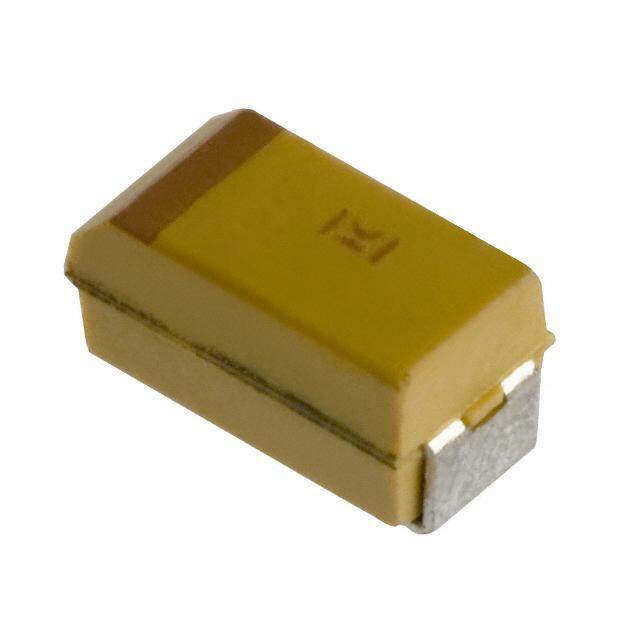

- 商务部:美国ITC正式对集成电路等产品启动337调查
- 曝三星4nm工艺存在良率问题 高通将骁龙8 Gen1或转产台积电
- 太阳诱电将投资9.5亿元在常州建新厂生产MLCC 预计2023年完工
- 英特尔发布欧洲新工厂建设计划 深化IDM 2.0 战略
- 台积电先进制程称霸业界 有大客户加持明年业绩稳了
- 达到5530亿美元!SIA预计今年全球半导体销售额将创下新高
- 英特尔拟将自动驾驶子公司Mobileye上市 估值或超500亿美元
- 三星加码芯片和SET,合并消费电子和移动部门,撤换高东真等 CEO
- 三星电子宣布重大人事变动 还合并消费电子和移动部门
- 海关总署:前11个月进口集成电路产品价值2.52万亿元 增长14.8%

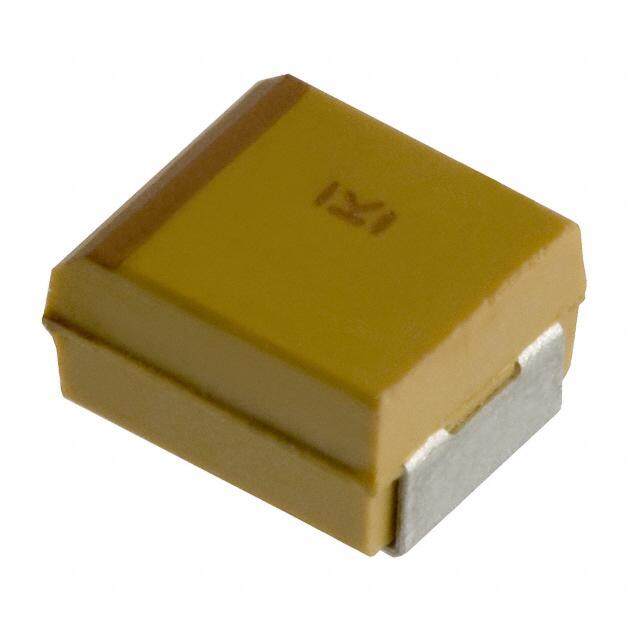
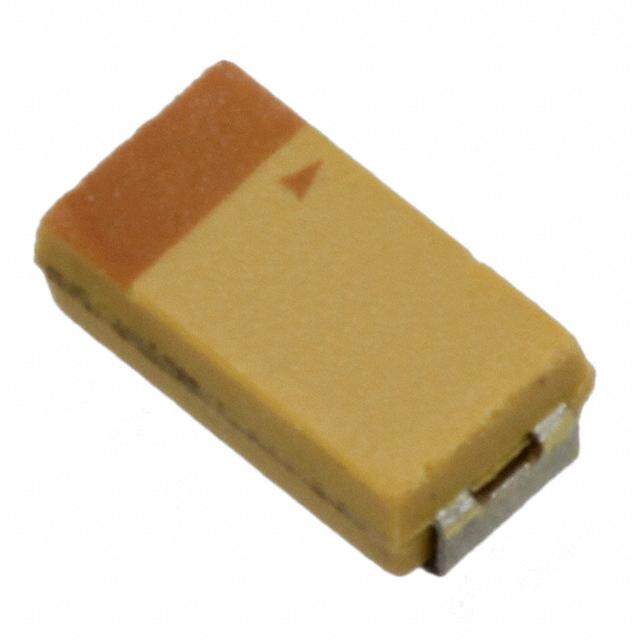
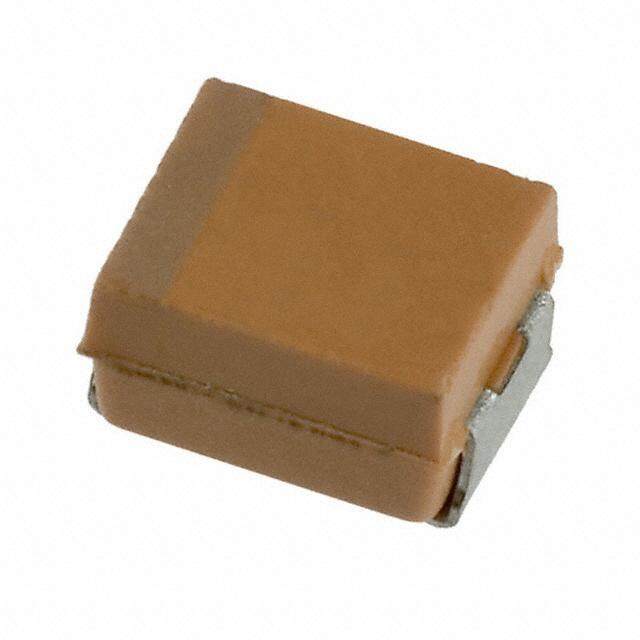

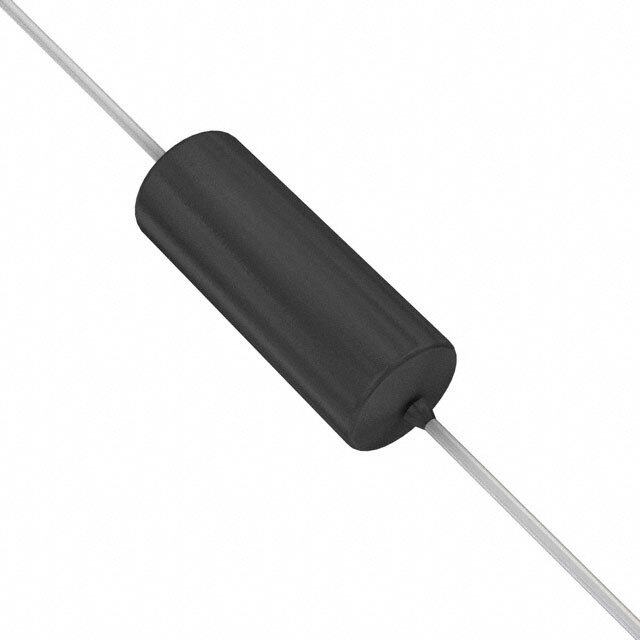
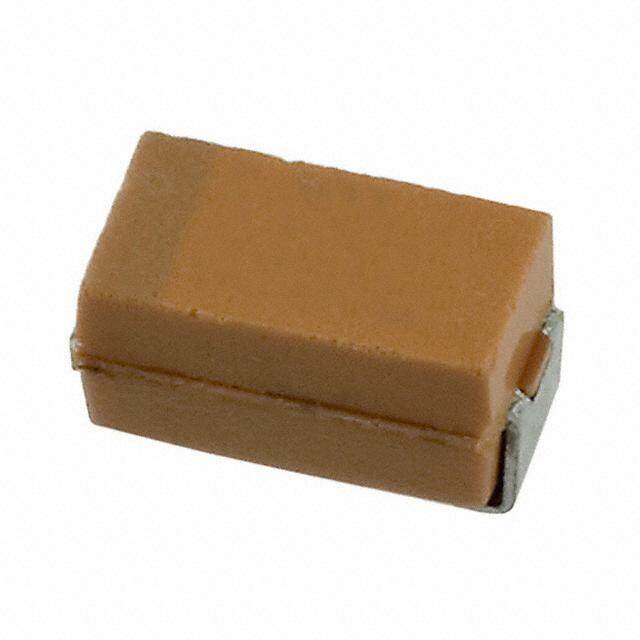

PDF Datasheet 数据手册内容提取
293D www.vishay.com Vishay Sprague Solid Tantalum Surface Mount Chip Capacitors TANTAMOUNT™, Molded Case, Standard Industrial Grade FEATURES • Molded case available in six case codes • Terminations: 100 % matte tin standard, Available tin / lead available • Compatible with “high volume” automati c Available pick and place equipment • Meets EIA-535-BAAC mechanical and performance requirements Available • Qualified to EIA-717 • Moisture sensitivity level 1 • Optical character recognition qualified PERFORMANCE / ELECTRICAL CHARACTERISTICS • Compliant terminations www.vishay.com/doc?40192 • Material categorization: for definitions of complianc e please see www.vishay.com/doc?99912 Operating Temperature: -55 °C to +125 °C (above 85 °C, voltage derating is required) Note * This datasheet provides information about parts that are Capacitance Range: 0.10 μF to 1000 μF RoHS-compliant and / or parts that are non RoHS-compliant. For example, parts with lead (Pb) terminations are not RoHS-compliant. Capacitance Tolerance: ± 5 %, ± 10 % , ± 20 % Please see the information / tables in this datasheet for details 100 % Surge Current Tested (D and E Case Codes) APPLICATIONS Voltage Rating: 4 V to 75 V DC DC • Industrial Note • Telecom infrastructure • For recommended voltage derating guidelines see “Typical Performance Characteristics” • General purpose ORDERING INFORMATION 293D 107 X9 010 D 2WE3 TYPE CAPACITANCE CAPACITANCE DC VOLTAGE RATING CASE CODE TERMINATION AND TOLERANCE AT +85 °C PACKAGING This is expressed in X0 = ± 20 % This is expressed in V. See Ratings Matte tin picofarads. The first X9 = ± 10 % To complete the three-digit and Case 2TE3 = 7" (178 mm) reel two digits are the X5 = ± 5 % block, zeros precede the Codes table 2WE3 = 13" (330 mm) reel significant figures. (special order) voltage rating. A decimal 2DE3 = 7" (178 mm) reel, The third is the number point is indicated by an “R” dry pack of zeros to follow. (6R3 = 6.3 V). 2RE3 = 13" (330 mm) reel, dry pack Tin / lead 8T = 7" (178 mm) reel 8W = 13" (330 mm) reel 8D = 7" (178 mm) reel, dry pack 8R = 13" (330 mm) reel, dry pack Notes • We reserve the right to supply higher voltage ratings and tighter capacitance tolerance capacitors in the same case size. Voltage substitutions will be marked with the higher voltage rating • We reserve the right to supply better series with more extensive screening • Dry pack as specified in J-STD-033 for MSL3. Applicable for D and E cases only Revision: 07-Feb-2019 1 Document Number: 40002 For technical questions, contact: tantalum@vishay.com THIS DOCUMENT IS SUBJECT TO CHANGE WITHOUT NOTICE. THE PRODUCTS DESCRIBED HEREIN AND THIS DOCUMENT ARE SUBJECT TO SPECIFIC DISCLAIMERS, SET FORTH AT www.vishay.com/doc?91000
293D www.vishay.com Vishay Sprague DIMENSIONS in inches [millimeters] L W T W H T (MIN.) Glue Pad H Glue Pad P CASE CODE EIA SIZE L W H P T T (MIN.) W H 0.126 ± 0.008 0.063 ± 0.008 0.063 ± 0.008 0.031 ± 0.012 0.047 ± 0.004 0.028 A 3216-18 [3.2 ± 0.20] [1.6 ± 0.20] [1.6 ± 0.20] [0.80 ± 0.30] [1.2 ± 0.10] [0.70] 0.138 ± 0.008 0.110 ± 0.008 0.075 ± 0.008 0.031 ± 0.012 0.087 ± 0.004 0.028 B 3528-21 [3.5 ± 0.20] [2.8 ± 0.20] [1.9 ± 0.20] [0.80 ± 0.30] [2.2 ± 0.10] [0.70] 0.236 ± 0.012 0.126 ± 0.012 0.098 ± 0.012 0.051 ± 0.012 0.087 ± 0.004 0.039 C 6032-28 [6.0 ± 0.30] [3.2 ± 0.30] [2.5 ± 0.30] [1.3 ± 0.30] [2.2 ± 0.10] [1.0] 0.287 ± 0.012 0.169 ± 0.012 0.110 ± 0.012 0.051 ± 0.012 0.094 ± 0.004 0.039 D 7343-31 [7.3 ± 0.30] [4.3 ± 0.30] [2.8 ± 0.30] [1.3 ± 0.30] [2.4 ± 0.10] [1.0] 0.287 ± 0.012 0.169 ± 0.012 0.157 ± 0.012 0.051 ± 0.012 0.094 ± 0.004 0.039 E 7343-43 [7.3 ± 0.30] [4.3 ± 0.30] [4.0 ± 0.30] [1.3 ± 0.30] [2.4 ± 0.10] [1.0] Note • Glue pad (non-conductive, part of molded case) is dedicated for glue attachment (as user option) RATINGS AND CASE CODES μF 4 V 6.3 V 10 V 16 V 20 V 25 V 35 V 50 V 63 V 75 V 0.10 A A A A 0.15 A A / B B 0.22 A A / B B 0.33 A A A / B B 0.47 A A A A / B A / B / C B 0.68 A A A A / B B / C B / C 1.0 A A A / B A / B A / B B / C D 1.5 A A A / B A / B A / B B / C B / C / D B / C / D 2.2 A A A / B A / B A / B A / B / C B / C B / C / D D 3.3 A A / B A / B A / B A / B / C A / B / C B / C / D C / D D D 4.7 A / B A / B A / B / C A / B / C A / B / C A / B / C / D B / C / D C / D / E D E 6.8 A / B A / B A / B / C A / B / C A / B / C B / C / D C / D D / E 10 A / B A / B / C A / B / C A / B / C / D B / C / D B / C / D C / D D / E E 15 A / B / C A / B / C A / B / C B / C B / C / D B / C / D C / D / E E 22 A / B / C A / B / C A / B / C / D B / C / D B / C / D C / D / E D / E 33 A / B / C A / B / C B / C / D B / C / D C / D D / E D / E 47 A / B / C A / B / C / D B / C / D C / D / E D / E D / E E (1) 68 B / C / D B / C / D B / C / D / E D / E D / E E 100 A / B / C / D B / C / D / E B / C / D / E D / E D / E 120 D D E 150 B / C / D C / D / E C / D / E D / E 220 B / C / D / E C / D / E D / E E 330 D / E D / E D / E 470 D / E D / E E 680 D / E E 1000 E E Note (1) 125 °C life test post test limits per AEC-Q200 Revision: 07-Feb-2019 2 Document Number: 40002 For technical questions, contact: tantalum@vishay.com THIS DOCUMENT IS SUBJECT TO CHANGE WITHOUT NOTICE. THE PRODUCTS DESCRIBED HEREIN AND THIS DOCUMENT ARE SUBJECT TO SPECIFIC DISCLAIMERS, SET FORTH AT www.vishay.com/doc?91000
293D www.vishay.com Vishay Sprague MARKING “A” CASE VOLTAGE CODE Capacitance code, pF Ilenaddic a(Ptebs)- free VOLTS CODE Capacitance, μF Voltage Ilenaddic a(Ptebs)- free 4.0 G Date code 6.3 J designation V 104L 10 A Polarity 22 10L 16 C band (+) XX 2 20 D Voltage 25 E Polarity band (+) code 35 V Date code Vishay marking 50 T A Case B, C, D, E Cases 75 S Marking Capacitor marking includes an anode (+) polarity band, capacitance in microfarads and the voltage rating. “A” case capacitors use a letter code for the voltage and EIA capacitance code. The Vishay identification marking is included if space permits. Vishay marking (“circled 2”) may show additives in the form of short lines, depicting actual manufacturing facility. For A case capacitors discontinuation in polarity bar maybe used as actual manufacturing facility designation. Capacitors rated at 6.3 V are marked 6 V. A manufacturing date code is marked on all capacitors, for details see FAQ: www.vishay.com/doc?40110. Capacitors may bear TP3 marking scheme if parts are substituted with high performance automotive grade TP3 family products. This includes, for example, letter “P” as shown below. Call the factory for further explanation. TP3 MARKING EXAMPLE Capacitance Indicates Indicates code, pF high performance (1) Capacitance high performance (1) Date code μF Voltage designation V 104Z Polarity 22 P10 band (+) XX 2 Voltage Polarity band (+) code Date code Vishay marking A Case B, C, D, E Cases Note (1) Capital letter indicates lead (Pb)-free STANDARD RATINGS MAX. DF MAX. ESR MAX. RIPPLE MAX. DCL CAPACITANCE AT +25 °C AT +25 °C 100 kHz CASE CODE PART NUMBER AT +25 °C (μF) 120 Hz 100 kHz I (μA) RMS (%) () (A) 4 V AT +85 °C; 2.7 V AT +125 °C DC DC 2.2 A 293D225(1)004A(2) 0.5 6 7.60 0.10 3.3 A 293D335(1)004A(2) 0.5 6 7.60 0.10 4.7 A 293D475(1)004A(2) 0.5 6 6.30 0.11 4.7 B 293D475(1)004B(2) 0.5 6 7.00 0.11 6.8 A 293D685(1)004A(2) 0.5 6 5.50 0.12 6.8 B 293D685(1)004B(2) 0.5 6 3.40 0.16 10 A 293D106(1)004A(2) 0.5 6 5.10 0.12 10 B 293D106(1)004B(2) 0.5 6 3.50 0.16 15 A 293D156(1)004A(2) 0.6 6 3.40 0.15 15 B 293D156(1)004B(2) 0.6 6 2.90 0.17 15 C 293D156(1)004C(2) 0.6 6 2.80 0.20 Note • Part number definitions: (1) Tolerance: X0, X9. For ± 5 % tolerance (code X5) contact factory (2) Terminations and packaging: 2TE3, 2WE3, 8T, 8W (3) Lead (Pb)-free terminations and packaging codes: 2TE3, 2WE3, 2DE3, 2RE3 (4) Terminations and packaging: 2TE3, 2WE3, 8T, 8W, 2DE3, 2RE3, 8D, 8R Revision: 07-Feb-2019 3 Document Number: 40002 For technical questions, contact: tantalum@vishay.com THIS DOCUMENT IS SUBJECT TO CHANGE WITHOUT NOTICE. THE PRODUCTS DESCRIBED HEREIN AND THIS DOCUMENT ARE SUBJECT TO SPECIFIC DISCLAIMERS, SET FORTH AT www.vishay.com/doc?91000
293D www.vishay.com Vishay Sprague STANDARD RATINGS MAX. DF MAX. ESR MAX. RIPPLE MAX. DCL CAPACITANCE AT +25 °C AT +25 °C 100 kHz CASE CODE PART NUMBER AT +25 °C (μF) 120 Hz 100 kHz I (μA) RMS (%) () (A) 4 V AT +85 °C; 2.7 V AT +125 °C DC DC 22 A 293D226(1)004A(2) 0.9 6 2.90 0.16 22 B 293D226(1)004B(2) 0.9 6 2.50 0.18 22 C 293D226(1)004C(2) 0.9 6 1.80 0.25 33 A 293D336(1)004A(2) 1.3 6 2.90 0.16 33 B 293D336(1)004B(2) 1.3 6 2.00 0.21 33 C 293D336(1)004C(2) 1.3 6 1.80 0.25 47 A 293D476(1)004A(2) 1.9 14 2.50 0.17 47 B 293D476(1)004B(2) 1.9 6 1.90 0.21 47 C 293D476(1)004C(2) 1.9 6 1.80 0.25 68 B 293D686(1)004B(2) 2.7 6 1.90 0.21 68 C 293D686(1)004C(2) 2.7 6 1.40 0.28 68 D 293D686(1)004D(4) 2.7 6 0.80 0.43 100 A 293D107X0004A(2) 10.0 30 2.50 0.22 100 B 293D107(1)004B(2) 4.0 8 1.80 0.22 100 C 293D107(1)004C(2) 4.0 6 0.80 0.37 100 D 293D107(1)004D(4) 4.0 6 0.70 0.46 120 D 293D127(1)004D(4) 4.8 6 0.60 0.51 150 B 293D157(1)004B(2) 6.0 14 1.60 0.23 150 C 293D157(1)004C(2) 6.0 12 0.70 0.40 150 D 293D157(1)004D(4) 6.0 8 0.60 0.50 220 B 293D227X0004B(2) 8.8 18 1.50 0.24 220 C 293D227(1)004C(2) 8.8 8 0.70 0.40 220 D 293D227(1)004D(4) 8.8 8 0.60 0.50 220 E 293D227(1)004E(4) 8.8 8 0.50 0.57 330 D 293D337(1)004D(4) 13.2 8 0.60 0.50 330 E 293D337(1)004E(4) 13.2 8 0.50 0.57 470 D 293D477(1)004D(4) 18.8 10 0.60 0.50 470 E 293D477(1)004E(4) 18.8 10 0.50 0.57 680 D 293D687X0004D(4) 27.2 25 0.20 0.87 680 E 293D687(1)004E(4) 27.2 12 0.50 0.57 1000 E 293D108X0004E(4) 40.0 20 0.50 0.57 6.3 V AT +85 °C; 4 V AT +125 °C DC DC 1.5 A 293D155(1)6R3A(2) 0.5 6 2.90 0.16 2.2 A 293D225(1)6R3A(2) 0.5 6 7.60 0.10 3.3 A 293D335(1)6R3A(2) 0.5 6 6.30 0.11 3.3 B 293D335(1)6R3B(2) 0.5 6 5.50 0.12 4.7 A 293D475(1)6R3A(2) 0.5 6 5.50 0.12 4.7 B 293D475(1)6R3B(2) 0.5 6 4.40 0.14 6.8 A 293D685(1)6R3A(2) 0.5 6 5.00 0.12 6.8 B 293D685(1)6R3B(2) 0.5 6 3.40 0.16 Note • Part number definitions: (1) Tolerance: X0, X9. For ± 5 % tolerance (code X5) contact factory (2) Terminations and packaging: 2TE3, 2WE3, 8T, 8W (3) Lead (Pb)-free terminations and packaging codes: 2TE3, 2WE3, 2DE3, 2RE3 (4) Terminations and packaging: 2TE3, 2WE3, 8T, 8W, 2DE3, 2RE3, 8D, 8R Revision: 07-Feb-2019 4 Document Number: 40002 For technical questions, contact: tantalum@vishay.com THIS DOCUMENT IS SUBJECT TO CHANGE WITHOUT NOTICE. THE PRODUCTS DESCRIBED HEREIN AND THIS DOCUMENT ARE SUBJECT TO SPECIFIC DISCLAIMERS, SET FORTH AT www.vishay.com/doc?91000
293D www.vishay.com Vishay Sprague STANDARD RATINGS MAX. DF MAX. ESR MAX. RIPPLE MAX. DCL CAPACITANCE AT +25 °C AT +25 °C 100 kHz CASE CODE PART NUMBER AT +25 °C (μF) 120 Hz 100 kHz I (μA) RMS (%) () (A) 6.3 V AT +85 °C; 4 V AT +125 °C DC DC 10 A 293D106(1)6R3A(2) 0.6 6 3.40 0.15 10 B 293D106(1)6R3B(2) 0.6 6 2.90 0.17 10 C 293D106(1)6R3C(2) 0.6 6 3.00 0.19 15 A 293D156(1)6R3A(2) 0.9 6 2.90 0.16 15 B 293D156(1)6R3B(2) 0.9 6 2.50 0.18 15 C 293D156(1)6R3C(2) 0.9 6 1.80 0.25 22 A 293D226(1)6R3A(2) 1.3 6 2.90 0.16 22 B 293D226(1)6R3B(2) 1.3 6 2.00 0.21 22 C 293D226(1)6R3C(2) 1.3 6 1.80 0.25 33 A 293D336(1)6R3A(2) 2.0 14 2.50 0.17 33 B 293D336(1)6R3B(2) 2.0 6 1.90 0.21 33 C 293D336(1)6R3C(2) 2.0 6 1.50 0.27 47 A 293D476(1)6R3A(2) 2.8 12 1.60 0.22 47 B 293D476(1)6R3B(2) 2.8 6 1.90 0.21 47 C 293D476(1)6R3C(2) 2.8 6 1.40 0.28 47 D 293D476(1)6R3D(4) 2.8 6 0.80 0.43 68 B 293D686(1)6R3B(2) 4.1 6 1.80 0.22 68 C 293D686(1)6R3C(2) 4.1 6 0.80 0.37 68 D 293D686(1)6R3D(4) 4.1 6 0.70 0.46 100 B 293D107(1)6R3B(2) 6.0 15 1.70 0.22 100 C 293D107(1)6R3C(2) 6.0 6 0.80 0.37 100 D 293D107(1)6R3D(4) 6.0 6 0.70 0.46 100 E 293D107(1)6R3E(4) 6.0 8 0.70 0.49 120 D 293D127(1)6R3D(4) 6.3 8 0.70 0.46 150 C 293D157(1)6R3C(2) 9.0 8 0.70 0.40 150 D 293D157(1)6R3D(4) 9.0 8 0.60 0.50 150 E 293D157(1)6R3E(4) 9.0 8 0.50 0.57 220 C 293D227(1)6R3C(2) 13.9 14 0.70 0.39 220 D 293D227(1)6R3D(4) 13.2 8 0.60 0.50 220 E 293D227(1)6R3E(4) 13.2 8 0.50 0.57 330 D 293D337(1)6R3D(4) 19.8 8 0.60 0.50 330 E 293D337(1)6R3E(4) 19.8 8 0.50 0.57 470 D 293D477(1)6R3D(4) 28.2 14 0.50 0.55 470 E 293D477(1)6R3E(4) 28.2 10 1.50 0.57 680 E 293D687(1)6R3E(4) 42.8 20 0.50 0.57 1000 E 293D108X06R3E(4) 63.0 30 0.40 0.64 Note • Part number definitions: (1) Tolerance: X0, X9. For ± 5 % tolerance (code X5) contact factory (2) Terminations and packaging: 2TE3, 2WE3, 8T, 8W (3) Lead (Pb)-free terminations and packaging codes: 2TE3, 2WE3, 2DE3, 2RE3 (4) Terminations and packaging: 2TE3, 2WE3, 8T, 8W, 2DE3, 2RE3, 8D, 8R Revision: 07-Feb-2019 5 Document Number: 40002 For technical questions, contact: tantalum@vishay.com THIS DOCUMENT IS SUBJECT TO CHANGE WITHOUT NOTICE. THE PRODUCTS DESCRIBED HEREIN AND THIS DOCUMENT ARE SUBJECT TO SPECIFIC DISCLAIMERS, SET FORTH AT www.vishay.com/doc?91000
293D www.vishay.com Vishay Sprague STANDARD RATINGS MAX. DF MAX. ESR MAX. RIPPLE MAX. DCL CAPACITANCE AT +25 °C AT +25 °C 100 kHz CASE CODE PART NUMBER AT +25 °C (μF) 120 Hz 100 kHz I (μA) RMS (%) () (A) 10 V AT +85 °C; 7 V AT +125 °C DC DC 0.47 A 293D474(1)010A(2) 0.5 4 14.00 0.07 1.0 A 293D105(1)010A(2) 0.5 4 9.60 0.09 1.5 A 293D155(1)010A(2) 0.5 6 8.00 0.10 2.2 A 293D225(1)010A(2) 0.5 6 6.30 0.11 2.2 B 293D225(1)010B(2) 0.5 6 4.60 0.14 3.3 A 293D335(1)010A(2) 0.5 6 5.50 0.12 3.3 B 293D335(1)010B(2) 0.5 6 5.50 0.12 4.7 A 293D475(1)010A(2) 0.5 6 5.00 0.12 4.7 B 293D475(1)010B(2) 0.5 6 3.40 0.16 4.7 C 293D475(1)010C(2) 0.5 6 2.30 0.22 6.8 A 293D685(1)010A(2) 0.7 6 4.20 0.13 6.8 B 293D685(1)010B(2) 0.7 6 2.90 0.17 6.8 C 293D685(1)010C(2) 0.7 6 1.90 0.24 10 A 293D106(1)010A(2) 1.0 6 3.40 0.15 10 B 293D106(1)010B(2) 1.0 6 2.50 0.18 10 C 293D106(1)010C(2) 1.0 6 1.80 0.25 15 A 293D156(1)010A(2) 1.5 6 2.90 0.16 15 B 293D156(1)010B(2) 1.5 6 2.00 0.21 15 C 293D156(1)010C(2) 1.5 6 1.80 0.25 22 A 293D226(1)010A(2) 2.2 8 2.50 0.17 22 B 293D226(1)010B(2) 2.2 6 1.90 0.21 22 C 293D226(1)010C(2) 2.2 6 1.50 0.27 22 D 293D226(1)010D(4) 2.2 6 1.50 0.32 33 B 293D336(1)010B(2) 3.3 6 1.90 0.21 33 C 293D336(1)010C(2) 3.3 6 1.40 0.28 33 D 293D336(1)010D(4) 3.3 6 0.80 0.43 47 B 293D476(1)010B(2) 4.7 6 1.80 0.22 47 C 293D476(1)010C(2) 4.7 6 1.10 0.32 47 D 293D476(1)010D(4) 4.7 6 0.70 0.46 68 B 293D686(1)010B(2) 6.8 14 1.80 0.22 68 C 293D686(1)010C(2) 6.8 6 1.00 0.33 68 D 293D686(1)010D(4) 6.8 6 0.70 0.46 68 E 293D686(1)010E(4) 6.8 6 0.80 0.45 100 B 293D107X0010B(2) 10.0 25 2.50 0.18 100 C 293D107(1)010C(2) 10.0 8 0.90 0.35 100 D 293D107(1)010D(4) 10.0 8 0.60 0.50 100 E 293D107(1)010E(4) 10.0 8 0.70 0.49 120 E 293D127(1)010E(4) 12.0 6 1.00 0.41 150 C 293D157(1)010C(2) 15.0 20 0.90 0.35 150 D 293D157(1)010D(4) 15.0 8 0.60 0.50 150 E 293D157(1)010E(4) 15.0 8 0.50 0.57 220 D 293D227(1)010D(4) 22.0 8 0.60 0.50 220 E 293D227(1)010E(4) 22.0 8 0.50 0.57 330 D 293D337(1)010D(4) 33.0 15 0.50 0.57 330 E 293D337(1)010E(4) 33.0 10 0.50 0.57 470 E 293D477(1)010E(4) 47.0 15 0.50 0.57 Note • Part number definitions: (1) Tolerance: X0, X9. For ± 5 % tolerance (code X5) contact factory (2) Terminations and packaging: 2TE3, 2WE3, 8T, 8W (3) Lead (Pb)-free terminations and packaging codes: 2TE3, 2WE3, 2DE3, 2RE3 (4) Terminations and packaging: 2TE3, 2WE3, 8T, 8W, 2DE3, 2RE3, 8D, 8R Revision: 07-Feb-2019 6 Document Number: 40002 For technical questions, contact: tantalum@vishay.com THIS DOCUMENT IS SUBJECT TO CHANGE WITHOUT NOTICE. THE PRODUCTS DESCRIBED HEREIN AND THIS DOCUMENT ARE SUBJECT TO SPECIFIC DISCLAIMERS, SET FORTH AT www.vishay.com/doc?91000
293D www.vishay.com Vishay Sprague STANDARD RATINGS MAX. DF MAX. ESR MAX. RIPPLE MAX. DCL CAPACITANCE AT +25 °C AT +25 °C 100 kHz CASE CODE PART NUMBER AT +25 °C (μF) 120 Hz 100 kHz I (μA) RMS (%) () (A) 16 V AT +85 °C; 10 V AT +125 °C DC DC 0.68 A 293D684(1)016A(2) 0.5 4 10.40 0.08 1.0 A 293D105(1)016A(2) 0.5 4 9.30 0.09 1.5 A 293D155(1)016A(2) 0.5 6 6.70 0.11 1.5 B 293D155(1)016B(2) 0.5 6 6.40 0.12 2.2 A 293D225(1)016A(2) 0.5 6 5.90 0.11 2.2 B 293D225(1)016B(2) 0.5 6 4.60 0.14 3.3 A 293D335(1)016A(2) 0.5 6 5.00 0.12 3.3 B 293D335(1)016B(2) 0.5 6 3.50 0.16 4.7 A 293D475(1)016A(2) 0.8 6 5.00 0.12 4.7 B 293D475(1)016B(2) 0.8 6 2.90 0.17 4.7 C 293D475(1)016C(2) 0.8 6 2.90 0.19 6.8 A 293D685(1)016A(2) 1.1 6 4.20 0.13 6.8 B 293D685(1)016B(2) 1.1 6 2.50 0.18 6.8 C 293D685(1)016C(2) 1.1 6 1.90 0.24 10 A 293D106(1)016A(2) 1.6 6 3.00 0.16 10 B 293D106(1)016B(2) 1.6 6 2.00 0.21 10 C 293D106(1)016C(2) 1.6 6 1.80 0.25 10 D 293D106(1)016D(4) 2.5 6 1.20 0.35 15 B 293D156(1)016B(2) 2.4 6 2.00 0.21 15 C 293D156(1)016C(2) 2.4 6 1.50 0.27 22 B 293D226(1)016B(2) 3.5 6 1.90 0.21 22 C 293D226(1)016C(2) 3.5 6 1.40 0.28 22 D 293D226(1)016D(4) 3.5 6 0.80 0.43 33 B 293D336(1)016B(2) 5.3 6 1.80 0.22 33 C 293D336(1)016C(2) 5.3 6 1.10 0.32 33 D 293D336(1)016D(4) 5.3 6 0.70 0.46 47 C 293D476(1)016C(2) 7.5 6 1.00 0.33 47 D 293D476(1)016D(4) 7.5 6 0.70 0.46 47 E 293D476(1)016E(4) 7.5 6 0.80 0.45 68 D 293D686(1)016D(4) 10.9 6 0.60 0.50 68 E 293D686(1)016E(4) 10.9 6 0.80 0.45 100 D 293D107(1)016D(4) 16.0 8 0.60 0.50 100 E 293D107(1)016E(4) 16.0 8 0.60 0.52 150 D 293D157(1)016D(4) 24.0 8 0.60 0.50 150 E 293D157(1)016E(4) 24.0 8 0.50 0.57 220 E 293D227(1)016E(4) 35.2 14 0.50 0.57 Note • Part number definitions: (1) Tolerance: X0, X9. For ± 5 % tolerance (code X5) contact factory (2) Terminations and packaging: 2TE3, 2WE3, 8T, 8W (3) Lead (Pb)-free terminations and packaging codes: 2TE3, 2WE3, 2DE3, 2RE3 (4) Terminations and packaging: 2TE3, 2WE3, 8T, 8W, 2DE3, 2RE3, 8D, 8R Revision: 07-Feb-2019 7 Document Number: 40002 For technical questions, contact: tantalum@vishay.com THIS DOCUMENT IS SUBJECT TO CHANGE WITHOUT NOTICE. THE PRODUCTS DESCRIBED HEREIN AND THIS DOCUMENT ARE SUBJECT TO SPECIFIC DISCLAIMERS, SET FORTH AT www.vishay.com/doc?91000
293D www.vishay.com Vishay Sprague STANDARD RATINGS MAX. DF MAX. ESR MAX. RIPPLE MAX. DCL CAPACITANCE AT +25 °C AT +25 °C 100 kHz CASE CODE PART NUMBER AT +25 °C (μF) 120 Hz 100 kHz I (μA) RMS (%) () (A) 20 V AT +85 °C; 13 V AT +125 °C DC DC 0.47 A 293D474(1)020A(2) 0.5 4 14.00 0.07 0.68 A 293D684(1)020A(2) 0.5 4 10.00 0.09 1.0 A 293D105(1)020A(2) 0.5 4 8.40 0.09 1.0 B 293D105(1)020B(2) 0.5 4 9.00 0.10 1.5 A 293D155(1)020A(2) 0.5 6 6.30 0.11 1.5 B 293D155(1)020B(2) 0.5 4.8 5.60 0.12 2.2 A 293D225(1)020A(2) 0.5 6 5.90 0.11 2.2 B 293D225(1)020B(2) 0.5 6 3.50 0.16 3.3 A 293D335(1)020A(2) 0.7 6 5.90 0.11 3.3 B 293D335(1)020B(2) 0.7 6 3.00 0.17 3.3 C 293D335(1)020C(2) 0.8 6 2.30 0.22 4.7 A 293D475(1)020A(2) 0.9 6 5.00 0.12 4.7 B 293D475(1)020B(2) 0.9 6 2.90 0.17 4.7 C 293D475(1)020C(2) 0.9 6 2.30 0.22 6.8 A 293D685(1)020A(2) 1.4 6 4.50 0.13 6.8 B 293D685(1)020B(2) 1.4 6 2.50 0.18 6.8 C 293D685(1)020C(2) 1.4 6 1.90 0.24 10 B 293D106(1)020B(2) 2.0 6 2.10 0.20 10 C 293D106(1)020C(2) 2.0 6 1.70 0.25 10 D 293D106(1)020D(4) 2.0 6 1.00 0.38 15 B 293D156(1)020B(2) 3.0 6 2.30 0.19 15 C 293D156(1)020C(2) 3.0 6 1.50 0.27 15 D 293D156(1)020D(4) 3.0 6 0.90 0.41 22 B 293D226(1)020B(2) 4.4 6 2.10 0.20 22 C 293D226(1)020C(2) 4.4 6 1.10 0.32 22 D 293D226(1)020D(4) 4.4 6 0.70 0.46 33 C 293D336(1)020C(2) 6.6 6 1.00 0.33 33 D 293D336(1)020D(4) 6.6 6 0.70 0.46 47 D 293D476(1)020D(4) 9.4 6 0.70 0.46 47 E 293D476(1)020E(4) 9.4 6 0.60 0.52 68 D 293D686(1)020D(4) 13.6 6 0.70 0.46 68 E 293D686(1)020E(4) 13.6 6 0.60 0.52 100 D 293D107(1)020D(4) 20.0 8 0.60 0.50 100 E 293D107(1)020E(4) 20.0 8 0.50 0.57 Note • Part number definitions: (1) Tolerance: X0, X9. For ± 5 % tolerance (code X5) contact factory (2) Terminations and packaging: 2TE3, 2WE3, 8T, 8W (3) Lead (Pb)-free terminations and packaging codes: 2TE3, 2WE3, 2DE3, 2RE3 (4) Terminations and packaging: 2TE3, 2WE3, 8T, 8W, 2DE3, 2RE3, 8D, 8R Revision: 07-Feb-2019 8 Document Number: 40002 For technical questions, contact: tantalum@vishay.com THIS DOCUMENT IS SUBJECT TO CHANGE WITHOUT NOTICE. THE PRODUCTS DESCRIBED HEREIN AND THIS DOCUMENT ARE SUBJECT TO SPECIFIC DISCLAIMERS, SET FORTH AT www.vishay.com/doc?91000
293D www.vishay.com Vishay Sprague STANDARD RATINGS MAX. DF MAX. ESR MAX. RIPPLE MAX. DCL CAPACITANCE AT +25 °C AT +25 °C 100 kHz CASE CODE PART NUMBER AT +25 °C (μF) 120 Hz 100 kHz I (μA) RMS (%) () (A) 25 V AT +85 °C; 17 V AT +125 °C DC DC 0.10 A 293D104(1)025A(2) 0.5 4 20.00 0.06 0.33 A 293D334(1)025A(2) 0.5 4 13.00 0.08 0.47 A 293D474(1)025A(2) 0.5 4 12.00 0.08 0.68 A 293D684(1)025A(2) 0.5 4 8.40 0.09 1.0 A 293D105(1)025A(2) 0.5 4 7.60 0.10 1.0 B 293D105(1)025B(2) 0.5 4 5.00 0.13 1.5 A 293D155(1)025A(2) 0.5 6 6.70 0.11 1.5 B 293D155(1)025B(2) 0.5 6 4.60 0.14 2.2 A 293D225(1)025A(2) 0.6 6 6.30 0.11 2.2 B 293D225(1)025B(2) 0.6 6 3.80 0.15 2.2 C 293D225(1)025C(2) 0.6 6 3.20 0.19 3.3 A 293D335(1)025A(2) 0.8 6 6.00 0.14 3.3 B 293D335(1)025B(2) 0.8 6 3.10 0.17 3.3 C 293D335(1)025C(2) 0.8 6 2.30 0.22 4.7 A 293D475(1)025A(2) 1.2 6 5.50 0.12 4.7 B 293D475(1)025B(2) 1.2 6 2.80 0.17 4.7 C 293D475(1)025C(2) 1.2 6 2.00 0.24 4.7 D 293D475(1)025D(4) 1.2 6 1.30 0.34 6.8 B 293D685(1)025B(2) 1.7 6 2.40 0.19 6.8 C 293D685(1)025C(2) 1.7 6 1.70 0.25 6.8 D 293D685(1)025D(4) 1.7 6 1.10 0.37 10 B 293D106(1)025B(2) 2.5 6 2.30 0.19 10 C 293D106(1)025C(2) 2.5 6 1.50 0.27 10 D 293D106(1)025D(4) 2.5 6 1.00 0.39 15 B 293D156(1)025B(2) 3.8 6 2.20 0.20 15 C 293D156(1)025C(2) 3.8 6 1.20 0.30 15 D 293D156(1)025D(4) 3.8 6 0.80 0.43 22 C 293D226(1)025C(2) 5.5 6 1.20 0.30 22 D 293D226(1)025D(4) 5.5 6 0.70 0.46 22 E 293D226(1)025E(4) 5.5 6 0.80 0.45 33 D 293D336(1)025D(4) 8.3 6 0.70 0.46 33 E 293D336(1)025E(4) 8.3 6 0.60 0.52 47 D 293D476(1)025D(4) 11.8 8 0.70 0.46 47 E 293D476(1)025E(4) 11.8 6 0.60 0.52 68 E 293D686(1)025E(4) 17.0 8 0.60 0.52 Note • Part number definitions: (1) Tolerance: X0, X9. For ± 5 % tolerance (code X5) contact factory (2) Terminations and packaging: 2TE3, 2WE3, 8T, 8W (3) Lead (Pb)-free terminations and packaging codes: 2TE3, 2WE3, 2DE3, 2RE3 (4) Terminations and packaging: 2TE3, 2WE3, 8T, 8W, 2DE3, 2RE3, 8D, 8R Revision: 07-Feb-2019 9 Document Number: 40002 For technical questions, contact: tantalum@vishay.com THIS DOCUMENT IS SUBJECT TO CHANGE WITHOUT NOTICE. THE PRODUCTS DESCRIBED HEREIN AND THIS DOCUMENT ARE SUBJECT TO SPECIFIC DISCLAIMERS, SET FORTH AT www.vishay.com/doc?91000
293D www.vishay.com Vishay Sprague STANDARD RATINGS MAX. DF MAX. ESR MAX. RIPPLE MAX. DCL CAPACITANCE AT +25 °C AT +25 °C 100 kHz CASE CODE PART NUMBER AT +25 °C (μF) 120 Hz 100 kHz I (μA) RMS (%) () (A) 35 V AT +85 °C; 23 V AT +125 °C DC DC 0.10 A 293D104(1)035A(2) 0.5 4 20.00 0.06 0.15 A 293D154(1)035A(2) 0.5 4 18.00 0.07 0.22 A 293D224(1)035A(2) 0.5 4 15.00 0.07 0.33 A 293D334(1)035A(2) 0.5 4 13.00 0.08 0.47 A 293D474(1)035A(2) 0.5 4 10.00 0.09 0.47 B 293D474(1)035B(2) 0.5 4 8.00 0.10 0.68 A 293D684(1)035A(2) 0.5 4 7.60 0.10 0.68 B 293D684(1)035B(2) 0.5 4 6.50 0.11 1.0 A 293D105(1)035A(2) 0.5 4 7.50 0.10 1.0 B 293D105(1)035B(2) 0.5 4 5.00 0.13 1.5 B 293D155(1)035B(2) 0.5 6 4.20 0.14 1.5 C 293D155(1)035C(2) 0.5 6 3.80 0.17 2.2 B 293D225(1)035B(2) 0.8 6 3.80 0.15 2.2 C 293D225(1)035C(2) 0.8 6 2.90 0.20 3.3 B 293D335(1)035B(2) 1.2 6 3.50 0.16 3.3 C 293D335(1)035C(2) 1.2 6 2.10 0.23 3.3 D 293D335(1)035D(4) 1.2 6 1.70 0.30 4.7 B 293D475(1)035B(2) 1.7 6 3.10 0.17 4.7 C 293D475(1)035C(2) 1.6 6 1.90 0.24 4.7 D 293D475(1)035D(4) 1.6 6 1.30 0.34 6.8 C 293D685(1)035C(2) 2.4 6 1.80 0.25 6.8 D 293D685(1)035D(4) 2.4 6 1.10 0.37 10 C 293D106(1)035C(2) 3.5 6 1.60 0.26 10 D 293D106(1)035D(4) 3.5 6 0.80 0.43 15 C 293D156(1)035C(2) 5.3 6 0.90 0.35 15 D 293D156(1)035D(4) 5.3 6 0.70 0.46 15 E 293D156(1)035E(4) 5.3 6 0.70 0.49 22 D 293D226(1)035D(4) 7.7 6 0.60 0.50 22 E 293D226(1)035E(4) 7.7 6 0.60 0.57 33 D 293D336X0035D(4) 11.6 6 0.70 0.46 33 E 293D336X0035E(4) 11.6 6 0.70 0.49 47 E 293D476(1)035E(4) 20.0 10 0.60 0.52 50 V AT +85 °C; 33 V AT +125 °C DC DC 0.10 A 293D104(1)050A(2) 0.5 4 19.00 0.06 0.15 A 293D154(1)050A(2) 0.5 4 17.00 0.07 0.15 B 293D154(1)050B(2) 0.5 4 14.00 0.08 0.22 A 293D224(1)050A(2) 0.5 4 15.00 0.07 0.22 B 293D224(1)050B(2) 0.5 4 12.00 0.08 0.33 A 293D334(1)050A(2) 0.5 4 14.00 0.07 0.33 B 293D334(1)050B(2) 0.5 4 10.00 0.09 0.47 A 293D474(1)050A(2) 0.5 4 12.00 0.08 0.47 B 293D474(1)050B(2) 0.5 4 8.40 0.10 0.47 C 293D474(1)050C(2) 0.5 4 6.70 0.13 Note • Part number definitions: (1) Tolerance: X0, X9. For ± 5 % tolerance (code X5) contact factory (2) Terminations and packaging: 2TE3, 2WE3, 8T, 8W (3) Lead (Pb)-free terminations and packaging codes: 2TE3, 2WE3, 2DE3, 2RE3 (4) Terminations and packaging: 2TE3, 2WE3, 8T, 8W, 2DE3, 2RE3, 8D, 8R Revision: 07-Feb-2019 10 Document Number: 40002 For technical questions, contact: tantalum@vishay.com THIS DOCUMENT IS SUBJECT TO CHANGE WITHOUT NOTICE. THE PRODUCTS DESCRIBED HEREIN AND THIS DOCUMENT ARE SUBJECT TO SPECIFIC DISCLAIMERS, SET FORTH AT www.vishay.com/doc?91000
293D www.vishay.com Vishay Sprague STANDARD RATINGS MAX. DF MAX. ESR MAX. RIPPLE MAX. DCL CAPACITANCE AT +25 °C AT +25 °C 100 kHz CASE CODE PART NUMBER AT +25 °C (μF) 120 Hz 100 kHz I (μA) RMS (%) () (A) 50 V AT +85 °C; 33 V AT +125 °C DC DC 0.68 B 293D684(1)050B(2) 0.5 4 7.60 0.11 0.68 C 293D684(1)050C(2) 0.5 4 5.90 0.14 1.0 B 293D105(1)050B(2) 0.5 4 6.70 0.11 1.0 C 293D105(1)050C(2) 0.5 4 4.60 0.16 1.5 B 293D155(1)050B(2) 0.8 6 6.00 0.12 1.5 C 293D155(1)050C(2) 0.8 6 3.40 0.18 1.5 D 293D155(1)050D(4) 0.8 6 2.90 0.23 2.2 B 293D225(1)050B(2) 1.1 6 3.50 0.16 2.2 C 293D225(1)050C(2) 1.1 6 2.90 0.20 2.2 D 293D225(1)050D(4) 1.1 6 2.10 0.27 3.3 C 293D335(1)050C(2) 1.7 6 2.50 0.21 3.3 D 293D335(1)050D(4) 1.7 6 1.70 0.30 4.7 C 293D475(1)050C(2) 2.4 6 1.50 0.27 4.7 D 293D475(1)050D(4) 2.4 6 1.20 0.37 4.7 E 293D475(1)050E(4) 2.4 6 1.10 0.34 6.8 D 293D685(1)050D(4) 3.4 6 0.90 0.41 6.8 E 293D685(1)050E(4) 3.4 6 0.90 0.43 10 D 293D106(1)050D(4) 5.0 6 0.80 0.43 10 E 293D106(1)050E(4) 5.0 6 0.80 0.45 15 E 293D156(1)050E(4) 7.5 6 0.80 0.45 63 V AT +85 °C; 40 V AT +125 °C DC DC 3.3 D 293D335(1)063D(4) 2.1 6 1.50 0.32 4.7 D 293D475(1)063D(4) 3.0 6 1.10 0.37 10 E 293D106(1)063E(4) 6.3 6 1.00 0.41 75 V AT +85 °C; 50 V AT +125 °C DC DC 0.10 A 293D104(1)075A(2) 0.5 4 30.00 0.05 0.15 B 293D154(1)075B(2) 0.5 4 25.00 0.06 0.22 B 293D224(1)075B(2) 0.5 4 20.00 0.07 0.33 B 293D334(1)075B(2) 0.5 4 15.00 0.08 0.47 B 293D474(1)075B(2) 0.5 4 12.00 0.08 0.68 B 293D684(1)075B(2) 0.6 4 10.00 0.09 0.68 C 293D684(1)075C(2) 0.6 4 10.00 0.11 1.0 D 293D105(1)075D(4) 0.8 6 6.00 0.16 1.5 B 293D155(1)075B(2) 1.1 6 4.00 0.15 1.5 C 293D155(1)075C(2) 1.1 6 4.00 0.17 1.5 D 293D155(1)075D(4) 1.1 6 4.00 0.19 2.2 D 293D225(1)075D(4) 1.7 6 3.00 0.22 3.3 D 293D335(1)075D(4) 2.5 6 2.50 0.24 4.7 E 293D475(1)075E(4) 3.5 10 2.50 0.26 Note • Part number definitions: (1) Tolerance: X0, X9. For ± 5 % tolerance (code X5) contact factory (2) Terminations and packaging: 2TE3, 2WE3, 8T, 8W (3) Lead (Pb)-free terminations and packaging codes: 2TE3, 2WE3, 2DE3, 2RE3 (4) Terminations and packaging: 2TE3, 2WE3, 8T, 8W, 2DE3, 2RE3, 8D, 8R Revision: 07-Feb-2019 11 Document Number: 40002 For technical questions, contact: tantalum@vishay.com THIS DOCUMENT IS SUBJECT TO CHANGE WITHOUT NOTICE. THE PRODUCTS DESCRIBED HEREIN AND THIS DOCUMENT ARE SUBJECT TO SPECIFIC DISCLAIMERS, SET FORTH AT www.vishay.com/doc?91000
293D www.vishay.com Vishay Sprague TYPICAL CURVES AT +25 °C, IMPEDANCE AND ESR VS. FREQUENCY Axis Title Axis Title 100 10000 100 10000 Impedance Impedance ESR ESR R (Ω) 10 1000 R (Ω) 10 1000 2nd lineance / ES 4.7 μF, 10 VDC - B case 1st line2nd line 2nd lineance / ES 10 μF, 16 VDC - C case 1st line2nd line ed 1 100 ed 1 100 p p m m I 4.7 μF, 10 V - D case I DC 0.1 10 0.1 10 1K 10K 100K 1M 10M 100M 1K 10K 100K 1M 10M 100M Frequency (Hz) Frequency (Hz) Axis Title Axis Title 100 10000 100 10000 Impedance Impedance ESR ESR R (Ω) 10 1000 R (Ω) 10 1000 2nd lineance / ES 6.8 μF, 20 VDC - C case 1st line2nd line 2nd lineance / ES 1 μF, 35 VDC - B case 1st line2nd line ed 1 100 ed 1 100 p p m m I 22 μF, 20 V - D case I DC 6.8 μF, 35 V - D case DC 0.1 10 0.1 10 1K 10K 100K 1M 10M 100M 1K 10K 100K 1M 10M 100M Frequency (Hz) Frequency (Hz) POWER DISSIPATION CASE CODE MAXIMUM PERMISSIBLE POWER DISSIPATION AT +25 °C (W) IN FREE AIR A 0.075 B 0.085 C 0.110 D 0.150 E 0.165 Revision: 07-Feb-2019 12 Document Number: 40002 For technical questions, contact: tantalum@vishay.com THIS DOCUMENT IS SUBJECT TO CHANGE WITHOUT NOTICE. THE PRODUCTS DESCRIBED HEREIN AND THIS DOCUMENT ARE SUBJECT TO SPECIFIC DISCLAIMERS, SET FORTH AT www.vishay.com/doc?91000
293D www.vishay.com Vishay Sprague STANDARD PACKAGING QUANTITY UNITS PER REEL CASE CODE 7" REEL 13" REEL A 2000 9000 B 2000 8000 C 500 3000 D 500 2500 E 400 1500 PRODUCT INFORMATION Guide for Molded Tantalum Capacitors Pad Dimensions www.vishay.com/doc?40074 Packaging Dimensions Moisture Sensitivity (MSL) www.vishay.com/doc?40135 SELECTOR GUIDES Solid Tantalum Selector Guide www.vishay.com/doc?49053 Solid Tantalum Chip Capacitors www.vishay.com/doc?40091 FAQ Frequently Asked Questions www.vishay.com/doc?40110 Revision: 07-Feb-2019 13 Document Number: 40002 For technical questions, contact: tantalum@vishay.com THIS DOCUMENT IS SUBJECT TO CHANGE WITHOUT NOTICE. THE PRODUCTS DESCRIBED HEREIN AND THIS DOCUMENT ARE SUBJECT TO SPECIFIC DISCLAIMERS, SET FORTH AT www.vishay.com/doc?91000
Molded Guide www.vishay.com Vishay Sprague Guide for Molded Tantalum Capacitors INTRODUCTION Rating for rating, tantalum capacitors tend to have as much as three times better capacitance / volume efficiency than Tantalum electrolytic capacitors are the preferred choice in aluminum electrolytic capacitors. An approximation of the applications where volumetric efficiency, stable electrical capacitance / volume efficiency of other types of capacitors parameters, high reliability, and long service life are primary may be inferred from the following table, which shows the considerations. The stability and resistance to elevated dielectric constant ranges of the various materials used in temperatures of the tantalum / tantalum oxide / manganese each type. Note that tantalum pentoxide has a dielectric dioxide system make solid tantalum capacitors an constant of 26, some three times greater than that of appropriate choice for today's surface mount assembly aluminum oxide. This, in addition to the fact that extremely technology. thin films can be deposited during the electrolytic process Vishay Sprague has been a pioneer and leader in this field, mentioned earlier, makes the tantalum capacitor extremely producing a large variety of tantalum capacitor types for efficient with respect to the number of microfarads available consumer, industrial, automotive, military, and aerospace per unit volume. The capacitance of any capacitor is electronic applications. determined by the surface area of the two conducting Tantalum is not found in its pure state. Rather, it is plates, the distance between the plates, and the dielectric commonly found in a number of oxide minerals, often in constant of the insulating material between the plates. combination with Columbium ore. This combination is known as “tantalite” when its contents are more than COMPARISON OF CAPACITOR one-half tantalum. Important sources of tantalite include DIELECTRIC CONSTANTS Australia, Brazil, Canada, China, and several African countries. Synthetic tantalite concentrates produced from e DIELECTRIC tin slags in Thailand, Malaysia, and Brazil are also a DIELECTRIC CONSTANT significant raw material for tantalum production. Air or vacuum 1.0 Electronic applications, and particularly capacitors, Paper 2.0 to 6.0 consume the largest share of world tantalum production. Plastic 2.1 to 6.0 Other important applications for tantalum include cutting Mineral oil 2.2 to 2.3 tools (tantalum carbide), high temperature super alloys, Silicone oil 2.7 to 2.8 chemical processing equipment, medical implants, and Quartz 3.8 to 4.4 military ordnance. Glass 4.8 to 8.0 Vishay Sprague is a major user of tantalum materials in the form of powder and wire for capacitor elements and rod and Porcelain 5.1 to 5.9 sheet for high temperature vacuum processing. Mica 5.4 to 8.7 Aluminum oxide 8.4 THE BASICS OF TANTALUM CAPACITORS Tantalum pentoxide 26 Most metals form crystalline oxides which are Ceramic 12 to 400K non-protecting, such as rust on iron or black oxide on copper. A few metals form dense, stable, tightly adhering, In the tantalum electrolytic capacitor, the distance between electrically insulating oxides. These are the so-called the plates is very small since it is only the thickness of the “valve”metals and include titanium, zirconium, niobium, tantalum pentoxide film. As the dielectric constant of the tantalum, hafnium, and aluminum. Only a few of these tantalum pentoxide is high, the capacitance of a tantalum permit the accurate control of oxide thickness by capacitor is high if the area of the plates is large: electrochemical means. Of these, the most valuable for the eA electronics industry are aluminum and tantalum. C = ------- t Capacitors are basic to all kinds of electrical equipment, from radios and television sets to missile controls and where automobile ignitions. Their function is to store an electrical charge for later use. C = capacitance Capacitors consist of two conducting surfaces, usually e = dielectric constant metal plates, whose function is to conduct electricity. They A = surface area of the dielectric are separated by an insulating material or dielectric. The dielectric used in all tantalum electrolytic capacitors is t = thickness of the dielectric tantalum pentoxide. Tantalum capacitors contain either liquid or solid Tantalum pentoxide compound possesses high-dielectric electrolytes. In solid electrolyte capacitors, a dry material strength and a high-dielectric constant. As capacitors are (manganese dioxide) forms the cathode plate. A tantalum being manufactured, a film of tantalum pentoxide is applied lead is embedded in or welded to the pellet, which is in turn to their electrodes by means of an electrolytic process. The connected to a termination or lead wire. The drawings show film is applied in various thicknesses and at various voltages the construction details of the surface mount types of and although transparent to begin with, it takes on different tantalum capacitors shown in this catalog. colors as light refracts through it. This coloring occurs on the tantalum electrodes of all types of tantalum capacitors. Revision: 13-Dec-2018 1 Document Number: 40074 For technical questions, contact: tantalum@vishay.com THIS DOCUMENT IS SUBJECT TO CHANGE WITHOUT NOTICE. THE PRODUCTS DESCRIBED HEREIN AND THIS DOCUMENT ARE SUBJECT TO SPECIFIC DISCLAIMERS, SET FORTH AT www.vishay.com/doc?91000
Molded Guide www.vishay.com Vishay Sprague SOLID ELECTROLYTE TANTALUM CAPACITORS TANTALUM CAPACITORS FOR ALL DESIGN CONSIDERATIONS Solid electrolyte capacitors contain manganese dioxide, which is formed on the tantalum pentoxide dielectric layer Solid electrolyte designs are the least expensive for a given by impregnating the pellet with a solution of manganous rating and are used in many applications where their very nitrate. The pellet is then heated in an oven, and the small size for a given unit of capacitance is of importance. manganous nitrate is converted to manganese dioxide. They will typically withstand up to about 10 % of the rated The pellet is next coated with graphite, followed by a layer DC working voltage in a reverse direction. Also important are their good low temperature performance characteristics of metallic silver, which provides a conductive surface between the pellet and the leadframe. and freedom from corrosive electrolytes. Vishay Sprague patented the original solid electrolyte Molded Chip tantalum capacitor encases the element in plastic resins, such as epoxy materials. After assembly, the capacitors and was the first to market them in 1956. Vishay capacitors are tested and inspected to assure long life and Sprague has the broadest line of tantalum capacitors and reliability. It offers excellent reliability and high stability for has continued its position of leadership in this field. Data sheets covering the various types and styles of Vishay consumer and commercial electronics with the added feature of low cost Sprague capacitors for consumer and entertainment electronics, industry, and military applications are available Surface mount designs of “Solid Tantalum” capacitors use where detailed performance characteristics must be lead frames or lead frameless designs as shown in the specified. accompanying drawings. MOLDED CHIP CAPACITOR Epoxy Silver Encapsulation Adhesive Anode Polarity Bar MnO/Carbon/ 2 Silver Coating Solderable Leadframe Solderable Anode Cathode Sintered Termination Termination Tantalum Revision: 13-Dec-2018 2 Document Number: 40074 For technical questions, contact: tantalum@vishay.com THIS DOCUMENT IS SUBJECT TO CHANGE WITHOUT NOTICE. THE PRODUCTS DESCRIBED HEREIN AND THIS DOCUMENT ARE SUBJECT TO SPECIFIC DISCLAIMERS, SET FORTH AT www.vishay.com/doc?91000
Molded Guide www.vishay.com Vishay Sprague COMMERCIAL PRODUCTS SOLID TANTALUM CAPACITORS - MOLDED CASE 793DX-CTC3- SERIES 293D 593D TR3 TP3 TL3 CTC4 PRODUCT IMAGE TYPE Surface mount TANTAMOUNT™, molded case Standard High performance, FEATURES CECC approved Low ESR Low ESR Very low DCL industrial grade automotive grade TEMPERATURE -55 °C to +125 °C RANGE CAPACITANCE 0.1 μF to 1000 μF 0.1 μF to 100 μF 1 μF to 470 μF 0.47 μF to 1000 μF 0.1 μF to 470 μF 0.1 μF to 470 μF RANGE VOLTAGE RANGE 4 V to 75 V 4 V to 50 V 4 V to 50 V 4 V to 75 V 4 V to 50 V 4 V to 50 V CAPACITANCE ± 10 %, ± 20 % TOLERANCE 0.005 CV or LEAKAGE 0.25 μA, 0.01 CV or 0.5 μA, whichever is greater CURRENT whichever is greater DISSIPATION 4 % to 30 % 4 % to 6 % 4 % to 15 % 4 % to 30 % 4 % to 15 % 4 % to 15 % FACTOR CASE CODES A, B, C, D, E A, B, C, D A, B, C, D, E A, B, C, D, E, W A, B, C, D, E A, B, C, D, E TERMINATION 100 % matte tin standard, tin / lead available SOLID TANTALUM CAPACITORS - MOLDED CASE SERIES TH3 TH4 TH5 PRODUCT IMAGE TYPE Surface mount TANTAMOUNT™, molded case High temperature +150 °C, High temperature +175 °C, FEATURES Very high temperature +200 °C automotive grade automotive grade TEMPERATURE -55 °C to +150 °C -55 °C to +175 °C -55 °C to +200 °C RANGE CAPACITANCE 0.33 μF to 220 μF 10 μF to 100 μF 4.7 μF to 100 μF RANGE VOLTAGE RANGE 6.3 V to 50 V 6.3 V to 35 V 5 V to 24 V CAPACITANCE ± 10 %, ± 20 % TOLERANCE LEAKAGE 0.01 CV or 0.5 μA, whichever is greater CURRENT DISSIPATION 4 % to 8 % 4.5 % to 8 % 6 % to 10 % FACTOR CASE CODES A, B, C, D, E B, C, D, E D, E 100 % matte tin standard, TERMINATION 100 % matte tin Gold plated tin / lead and gold plated available Revision: 13-Dec-2018 3 Document Number: 40074 For technical questions, contact: tantalum@vishay.com THIS DOCUMENT IS SUBJECT TO CHANGE WITHOUT NOTICE. THE PRODUCTS DESCRIBED HEREIN AND THIS DOCUMENT ARE SUBJECT TO SPECIFIC DISCLAIMERS, SET FORTH AT www.vishay.com/doc?91000
Molded Guide www.vishay.com Vishay Sprague HIGH RELIABILITY PRODUCTS SOLID TANTALUM CAPACITORS - MOLDED CASE SERIES TM3 T83 CWR11 95158 PRODUCT IMAGE TANTAMOUNT™, TANTAMOUNT™, TANTAMOUNT™, molded case, TYPE molded case, molded case, hi-rel. DLA approved hi-rel. COTS High reliability, High reliability, FEATURES MIL-PRF-55365/8 qualified Low ESR for medical Instruments standard and low ESR TEMPERATURE -55 °C to +125 °C RANGE CAPACITANCE 1 μF to 220 μF 0.1 μF to 470 μF 0.1 μF to 100 μF 4.7 μF to 220 μF RANGE VOLTAGE RANGE 4 V to 20 V 4 V to 63 V 4 V to 50 V CAPACITANCE ± 10 %, ± 20 % ± 5 %, ± 10 %, ± 20 % ± 10 %, ± 20 % TOLERANCE LEAKAGE 0.005 CV or 0.25 μA, 0.01 CV or 0.5 μA, whichever is greater CURRENT whichever is greater DISSIPATION 4 % to 8 % 4 % to 15 % 4 % to 6 % 4 % to 12 % FACTOR CASE CODES A, B, C, D, E A, B, C, D, E A, B, C, D C, D, E 100 % matte tin; 100 % matte tin; Tin / lead; Tin / lead solder plated; TERMINATION tin / lead; tin / lead tin / lead solder fused gold plated tin / lead solder fused Revision: 13-Dec-2018 4 Document Number: 40074 For technical questions, contact: tantalum@vishay.com THIS DOCUMENT IS SUBJECT TO CHANGE WITHOUT NOTICE. THE PRODUCTS DESCRIBED HEREIN AND THIS DOCUMENT ARE SUBJECT TO SPECIFIC DISCLAIMERS, SET FORTH AT www.vishay.com/doc?91000
Molded Guide www.vishay.com Vishay Sprague PLASTIC TAPE AND REEL PACKAGING in inches [millimeters] 0.157 ± 0.004 [4.0 ± 0.10] 10 pitches cumulative Tape thickness tolerance on tape Deformation 0.059 + 0.004 - 0.0 ± 0.008 [0.200] 0.014 between [1.5 + 0.10 - 0.0] [ 0M.3A5X]. embossments 0[2..007 ±9 ±0. 005.0]02 Embossment 0[1..07659 ± ± 0 0.1.000]4 Top cover tape A0 0.030 [0.75] 20° (BN1o MteA 6X). K0 B MIN . (Note 3) F W Mcoamxipmounment Top 0 0.030 [0.75] rotation cover MIN . (Note 4) (Side or front sectional view) tape 0.004 [0.1] Center lines P For tape feeder MAX. of cavity 1 D MIN. for components reference only 0.1079 x 0.047 [2.0 x 1.2] and larger. including draft. USER DIRECTION OF FEED Maximum (Note 5) Concentric around B0 cavity size (Note 5) (Note 1) Cathode (-) Anode (+) Direction of Feed 3.937 [100.0] Tape and Reel Specifications: all case sizes are available 20° maximum 0.039 [1.0] on plastic embossed tape per EIA-481. Standard reel component rotation MAX. diameter is 7" [178 mm], 13" [330 mm] reels are available and Typical component Tape recommended as the most cost effective packaging method. B0 ccaevnitteyr line 0.039 [1.0] The most efficient packaging quantities are full reel MAX. increments on a given reel diameter. The quantities shown 0.9843 [250.0] Typical allow for the sealed empty pockets required to be in component Camber conformance with EIA-481. Reel size and packaging A0 center line Allow a b l e c a m b e(tro tpo vbieew 0).039/3.937 [1/100] orientation must be specified in the Vishay Sprague part (Top view) non-cumulative over 9.843 [250.0] number. Notes • Metric dimensions will govern. Dimensions in inches are rounded and for reference only. (1) A , B , K , are determined by the maximum dimensions to the ends of the terminals extending from the component body and / or the body 0 0 0 dimensions of the component. The clearance between the ends of the terminals or body of the component to the sides and depth of the cavity (A , B , K ) must be within 0.002" (0.05 mm) minimum and 0.020" (0.50 mm) maximum. The clearance allowed must also prevent 0 0 0 rotation of the component within the cavity of not more than 20°. (2) Tape with components shall pass around radius “R” without damage. The minimum trailer length may require additional length to provide “R” minimum for 12 mm embossed tape for reels with hub diameters approaching N minimum. (3) This dimension is the flat area from the edge of the sprocket hole to either outward deformation of the carrier tape between the embossed cavities or to the edge of the cavity whichever is less. (4) This dimension is the flat area from the edge of the carrier tape opposite the sprocket holes to either the outward deformation of the carrier tape between the embossed cavity or to the edge of the cavity whichever is less. (5) The embossed hole location shall be measured from the sprocket hole controlling the location of the embossement. Dimensions of embossement location shall be applied independent of each other. (6) B dimension is a reference dimension tape feeder clearance only. 1 CASE TAPE B D K 1 1 F 0 P W CODE SIZE (MAX.) (MIN.) (MAX.) 1 MOLDED CHIP CAPACITORS; ALL TYPES A 0.165 0.039 0.138 ± 0.002 0.094 0.157 ± 0.004 0.315 ± 0.012 8 mm B [4.2] [1.0] [3.5 ± 0.05] [2.4] [4.0 ± 1.0] [8.0 ± 0.30] C D 0.32 0.059 0.217 ± 0.00 0.177 0.315 ± 0.004 0.472 ± 0.012 12 mm E [8.2] [1.5] [5.5 ± 0.05] [4.5] [8.0 ± 1.0] [12.0 ± 0.30] W Revision: 13-Dec-2018 5 Document Number: 40074 For technical questions, contact: tantalum@vishay.com THIS DOCUMENT IS SUBJECT TO CHANGE WITHOUT NOTICE. THE PRODUCTS DESCRIBED HEREIN AND THIS DOCUMENT ARE SUBJECT TO SPECIFIC DISCLAIMERS, SET FORTH AT www.vishay.com/doc?91000
Molded Guide www.vishay.com Vishay Sprague RECOMMENDED REFLOW PROFILES Capacitors should withstand reflow profile as per J-STD-020 standard, three cycles. T p T - 5 °C Max. ramp-up rate = 3 °C/s tp C Max. ramp-down rate = 6 °C/s C) T RE (° L Ts max. Preheat area tL U T A R T E s min. P M TE ts 25 Time 25 °C to peak TIME (s) PROFILE FEATURE SnPb EUTECTIC ASSEMBLY LEAD (Pb)-FREE ASSEMBLY Preheat / soak Temperature min. (T ) 100 °C 150 °C s min. Temperature max. (T ) 150 °C 200 °C s max. Time (t) from (T to T ) 60 s to 120 s 60 s to 120 s s smin. s max. Ramp-up Ramp-up rate (T to T ) 3 °C/s max. 3 °C/s max. L p Liquidus temperature (T ) 183 °C 217 °C L Time (t ) maintained above T 60 s to 150 s 60 s to 150 s L L Peak package body temperature (T ) Depends on case size - see table below p Time (tp) within 5 °C of the specified 20 s 30 s classification temperature (T ) C Time 25 °C to peak temperature 6 min max. 8 min max. Ramp-down Ramp-down rate (T to T ) 6 °C/s max. 6 °C/s max. p L PEAK PACKAGE BODY TEMPERATURE (T ) p PEAK PACKAGE BODY TEMPERATURE (T ) CASE CODE p SnPb EUTECTIC PROCESS LEAD (Pb)-FREE PROCESS A, B, C 235 °C 260 °C D, E, W 220 °C 250 °C PAD DIMENSIONS in inches [millimeters] D B C A A B C D CASE CODE (MIN.) (NOM.) (NOM.) (NOM.) MOLDED CHIP CAPACITORS, ALL TYPES A 0.071 [1.80] 0.067 [1.70] 0.053 [1.35] 0.187 [4.75] B 0.118 [3.00] 0.071 [1.80] 0.065 [1.65] 0.207 [5.25] C 0.118 [3.00] 0.094 [2.40] 0.118 [3.00] 0.307 [7.80] D 0.157 [4.00] 0.098 [2.50] 0.150 [3.80] 0.346 [8.80] E 0.157 [4.00] 0.098 [2.50] 0.150 [3.80] 0.346 [8.80] W 0.185 [4.70] 0.098 [2.50] 0.150 [3.80] 0.346 [8.80] Revision: 13-Dec-2018 6 Document Number: 40074 For technical questions, contact: tantalum@vishay.com THIS DOCUMENT IS SUBJECT TO CHANGE WITHOUT NOTICE. THE PRODUCTS DESCRIBED HEREIN AND THIS DOCUMENT ARE SUBJECT TO SPECIFIC DISCLAIMERS, SET FORTH AT www.vishay.com/doc?91000
Molded Guide www.vishay.com Vishay Sprague GUIDE TO APPLICATION 1. AC Ripple Current: the maximum allowable ripple be established when calculating permissible current shall be determined from the formula: operating levels. (Power dissipation calculated using +25 °C temperature rise). P I = ------------ RMS R 6. Printed Circuit Board Materials: molded capacitors ESR are compatible with commonly used printed circuit where, board materials (alumina substrates, FR4, FR5, G10, PTFE-fluorocarbon and porcelanized steel). P = power dissipation in W at +25 °C as given in the tables in the product datasheets (Power 7. Attachment: Dissipation). 7.1 Solder Paste: the recommended thickness of the R = the capacitor equivalent series resistance at ESR solder paste after application is 0.007" ± 0.001" the specified frequency [0.178 mm ± 0.025 mm]. Care should be exercised in selecting the solder paste. The metal purity should be 2. AC Ripple Voltage: the maximum allowable ripple as high as practical. The flux (in the paste) must be voltage shall be determined from the formula: active enough to remove the oxides formed on the V = I x Z metallization prior to the exposure to soldering heat. In RMS RMS practice this can be aided by extending the solder or, from the formula: preheat time at temperatures below the liquidous state of the solder. P V = Z ------------ RMS R 7.2 Soldering: capacitors can be attached by ESR conventional soldering techniques; vapor phase, where, convection reflow, infrared reflow, wave soldering, and hot plate methods. The soldering profile charts P = power dissipation in W at +25 °C as given in show recommended time / temperature conditions the tables in the product datasheets (Power for soldering. Preheating is recommended. The Dissipation). recommended maximum ramp rate is 2 °C per s. R = the capacitor equivalent series resistance at Attachment with a soldering iron is not ESR the specified frequency recommended due to the difficulty of controlling temperature and time at temperature. The soldering Z = the capacitor impedance at the specified iron must never come in contact with the capacitor. frequency 2.1 The sum of the peak AC voltage plus the applied DC 7.2.1 Backward and Forward Compatibility: capacitors voltage shall not exceed the DC voltage rating of the with SnPb or 100 % tin termination finishes can be capacitor. soldered using SnPb or lead (Pb)-free soldering processes. 2.2 The sum of the negative peak AC voltage plus the applied DC voltage shall not allow a voltage reversal 8. Cleaning (Flux Removal) After Soldering: molded exceeding 10 % of the DC working voltage at capacitors are compatible with all commonly used +25 °C. solvents such as TES, TMS, Prelete, Chlorethane, Terpene and aqueous cleaning media. However, 3. Reverse Voltage: solid tantalum capacitors are not CFC / ODS products are not used in the production intended for use with reverse voltage applied. of these devices and are not recommended. However, they have been shown to be capable of Solvents containing methylene chloride or other withstanding momentary reverse voltage peaks of up epoxy solvents should be avoided since these will to 10 % of the DC rating at 25 °C and 5 % of the DC attack the epoxy encapsulation material. rating at +85 °C. 8.1 When using ultrasonic cleaning, the board may 4. Temperature Derating: if these capacitors are to be resonate if the output power is too high. This operated at temperatures above +25 °C, the vibration can cause cracking or a decrease in the permissible RMS ripple current shall be calculated adherence of the termination. DO NOT EXCEED 9W/l using the derating factors as shown: at 40 kHz for 2 min. 9. Recommended Mounting Pad Geometries: proper TEMPERATURE (°C) DERATING FACTOR mounting pad geometries are essential for +25 1.0 successful solder connections. These dimensions +85 0.9 are highly process sensitive and should be designed +125 0.4 to minimize component rework due to unacceptable +150 (1) 0.3 solder joints. The dimensional configurations shown +175 (1) 0.2 are the recommended pad geometries for both wave +200 (1) 0.1 and reflow soldering techniques. These dimensions are intended to be a starting point for circuit board Note designers and may be fine tuned if necessary based (1)Applicable for dedicated high temperature product series upon the peculiarities of the soldering process and / or circuit board design. 5. Power Dissipation: power dissipation will be affected by the heat sinking capability of the mounting surface. Non-sinusoidal ripple current may produce heating effects which differ from those shown. It is important that the equivalent I value RMS Revision: 13-Dec-2018 7 Document Number: 40074 For technical questions, contact: tantalum@vishay.com THIS DOCUMENT IS SUBJECT TO CHANGE WITHOUT NOTICE. THE PRODUCTS DESCRIBED HEREIN AND THIS DOCUMENT ARE SUBJECT TO SPECIFIC DISCLAIMERS, SET FORTH AT www.vishay.com/doc?91000
Typical Performance Characteristics www.vishay.com Vishay Sprague Molded Chip Tantalum Capacitors CAPACITOR ELECTRICAL PERFORMANCE CHARACTERISTICS ITEM PERFORMANCE CHARACTERISTICS Category temperature range -55 °C to +85 °C (to +125 °C with voltage derating) Capacitance tolerance ± 20 %, ± 10 %. Tested via bridge method, at +25 °C, 120 Hz Dissipation factor Limit per Standard Ratings table. Tested via bridge method, at 25 °C, 120 Hz ESR Limit per Standard Ratings table. Tested via bridge method, at 25 °C, 100 kHz Leakage current After application of rated voltage applied to capacitors for 5 min using a steady source of power with 1 k resistor in series with the capacitor under test, leakage current at 25 °C is not more than 0.01 CV o r 0.5 μA, whichever is greater. Note that the leakage current varies with temperature and applied voltage . See graph below for the appropriate adjustment factor. Capacitance change by +20 % max. (at +125 °C) temperature +10 % max. (at +85 °C) -10 % max. (at -55 °C) Reverse voltage Capacitors are capable of withstanding peak voltages in the reverse direction equal to: 10 % of the DC rating at +25 °C 5 % of the DC rating at +85 °C Vishay does not recommend intentional or repetitive application of reverse voltage Ripple current For maximum ripple current values (at 25 °C) refer to relevant datasheet. If capacitors are to be used a t temperatures above +25 °C, the permissible RMS ripple current (or voltage) shall be calculated using the derating factors: 1.0 at +25 °C; 0.9 at +85 °C; 0.4 at +125 °C Maximum operating and surge +85 °C +125 °C voltages vs. temperature RATED VOLTAGE SURGE VOLTAGE CATEGORY VOLTAGE SURGE VOLTAGE (V) (V) (V) (V) 4 5.2 2.7 3.4 6.3 8 4 5 10 13 7 8 16 20 10 12 20 26 13 16 25 32 17 20 35 (3) 46 23 28 35 (4) 42 23 28 50 65 33 40 50 (1) 60 33 40 63 75 42 50 75 (2) 75 50 50 Recommended voltage VOLTAGE RAIL CAPACITOR VOLTAGE RATING derating guidelines 3.3 6.3 (below 85 °C) (5) 5 10 10 20 12 25 15 35 24 50 or series configuration Notes • All information presented in this document reflects typical performance characteristics (1) Capacitance values 15 μF and higher (2) For 293D and TR3 only (3) Capacitance values lower than 33 μF (4) Capacitance values 33 μF and higher (5) For temperatures above +85 °C the same voltage derating ratio is recommended, but with respect to category voltage: up to +85 °C: category voltage = rated voltage; at +125 °C: category voltage = 2/3 of rated voltage, between these temperatures it decreases linearly - see graph below Revision: 07-Feb-2019 1 Document Number: 40192 For technical questions, contact: tantalum@vishay.com THIS DOCUMENT IS SUBJECT TO CHANGE WITHOUT NOTICE. THE PRODUCTS DESCRIBED HEREIN AND THIS DOCUMENT ARE SUBJECT TO SPECIFIC DISCLAIMERS, SET FORTH AT www.vishay.com/doc?91000
Typical Performance Characteristics www.vishay.com Vishay Sprague CATEGORY VOLTAGE VS. TEMPERATURE Axis Title 1.2 10000 1.0 V) e ( 0.8 1000 g 2nd lineory Volta 0.6 1st line2nd line g e 0.4 100 at C 0.2 0 10 -55 0 25 55 85 105 125 Temperature (°C) TYPICAL LEAKAGE CURRENT TEMPERATURE FACTOR Axis Title 100 10000 10 or +175 °C act +150 °C 1000 F 2nd linee Current 0.11 +18255 +° °C5C5 °C 1st line2ndline g a 100 k a +25 °C e L 0.01 0 °C -55 °C 0.001 10 0 10 20 30 40 50 60 70 80 90 100 Percent of Rated Voltage Note • At +25 °C, the leakage current shall not exceed the value listed in the Standard Ratings table. At +85 °C, the leakage current shall not exceed 10 times the value listed in the Standard Ratings table. At +125 °C, the leakage current shall not exceed 12 times the value listed in the Standard Ratings table. At +150 °C, the leakage current shall not exceed 15 times the value listed in the Standard Ratings table. At +175 °C, the leakage current shall not exceed 18 times the value listed in the Standard Ratings table Revision: 07-Feb-2019 2 Document Number: 40192 For technical questions, contact: tantalum@vishay.com THIS DOCUMENT IS SUBJECT TO CHANGE WITHOUT NOTICE. THE PRODUCTS DESCRIBED HEREIN AND THIS DOCUMENT ARE SUBJECT TO SPECIFIC DISCLAIMERS, SET FORTH AT www.vishay.com/doc?91000
Typical Performance Characteristics www.vishay.com Vishay Sprague ENVIRONMENTAL PERFORMANCE CHARACTERISTICS ITEM CONDITION POST TEST PERFORMANCE Surge voltage Post application of surge voltage (as specified in Capacitance change Within ± 10 % of initial value the table above) in series with a 33 resistor a t Dissipation factor Initial specified limit the rate of 30 s ON, 30 s OFF, for 1000 successiv e Leakage current Initial specified limit test cycles at 85 °C. Life test at +85 °C 1000 h application of rated voltage at 85 °C. Capacitance change Within -20 % / +10 % of initial value MIL-STD-202, method 108 Dissipation factor Initial specified limit Leakage current Shall not exceed 125 % of initial limit Life test at +125 °C 1000 h application 2/3 of rated voltage at 125 °C. Capacitance change Within -20 % / +10 % of initial value MIL-STD-202, method 108 Dissipation factor Initial specified limit Leakage current Shall not exceed 125 % of initial limit Humidity tests At 60 °C / 90 % RH 1000 h, biased Capacitance change Within -10 % / +20 % of initial value Dissipation factor Not to exceed 150 % of initial limit Leakage current Shall not exceed 200 % of initial limit Thermal shock MIL-STD-202, method 107, test condition A Capacitance change Within ± 10 % of initial value (-55 °C / +85 °C, for 1000 cycles) Dissipation factor Initial specified limit Leakage current Initial specified limit MECHANICAL PERFORMANCE CHARACTERISTICS TEST CONDITION CONDITION POST TEST PERFORMANCE Terminal strength / Apply a pressure load of 17.7 N for 60 s horizontally Capacitance change Within ± 10 % of initial value shear force test to the center of capacitor side body. Dissipation factor Initial specified limit Leakage current Initial specified limit There shall be no mechanical or visual damage to capacitors post-conditioning. Vibration MIL-STD-202, method 204, condition D, Electrical measurements are not applicable, since the same 10 Hz to 2000 Hz, 20 g peak, 8 h, at rated voltage parts are used for shock (specified pulse) test. There shall be no mechanical or visual damage to capacitors post-conditioning. Shock MIL-STD-202, method 213, condition I, Capacitance change Within ± 10 % of initial value (specified pulse) 100 g peak Dissipation factor Initial specified limit Leakage current Initial specified limit There shall be no mechanical or visual damage to capacitors post-conditioning. Resistance to Recommended reflow profiles temperatures and Capacitance change Within ± 10 % of initial value soldering heat durations are located within the Capacitor Series Dissipation factor Initial specified limit Guides Leakage current Initial specified limit MIL-STD-202, method 210, condition B There shall be no mechanical or visual damage to capacitors post-conditioning. Solderability and MIL-STD-202, method 208, ANSI/J-STD-002, test There shall be no mechanical or visual damage to capacitors dissolution of B (SnPb) and B1 (lead (Pb)-free). Dissolution of post-conditioning. metallization metallization: method D. Does not apply to gold terminations. Flammability Encapsulation materials meet UL 94 V-0 with an oxygen index of 32 %. Revision: 07-Feb-2019 3 Document Number: 40192 For technical questions, contact: tantalum@vishay.com THIS DOCUMENT IS SUBJECT TO CHANGE WITHOUT NOTICE. THE PRODUCTS DESCRIBED HEREIN AND THIS DOCUMENT ARE SUBJECT TO SPECIFIC DISCLAIMERS, SET FORTH AT www.vishay.com/doc?91000
Legal Disclaimer Notice www.vishay.com Vishay Disclaimer ALL PRODUCT, PRODUCT SPECIFICATIONS AND DATA ARE SUBJECT TO CHANGE WITHOUT NOTICE TO IMPROVE RELIABILITY, FUNCTION OR DESIGN OR OTHERWISE. Vishay Intertechnology, Inc., its affiliates, agents, and employees, and all persons acting on its or their behalf (collectively, “Vishay”), disclaim any and all liability for any errors, inaccuracies or incompleteness contained in any datasheet or in any other disclosure relating to any product. Vishay makes no warranty, representation or guarantee regarding the suitability of the products for any particular purpose or the continuing production of any product. To the maximum extent permitted by applicable law, Vishay disclaims (i) any and all liability arising out of the application or use of any product, (ii) any and all liability, including without limitation special, consequential or incidental damages, and (iii) any and all implied warranties, including warranties of fitness for particular purpose, non-infringement and merchantability. Statements regarding the suitability of products for certain types of applications are based on Vishay’s knowledge of typical requirements that are often placed on Vishay products in generic applications. Such statements are not binding statements about the suitability of products for a particular application. It is the customer’s responsibility to validate that a particular product with the properties described in the product specification is suitable for use in a particular application. Parameters provided in datasheets and / or specifications may vary in different applications and performance may vary over time. All operating parameters, including typical parameters, must be validated for each customer application by the customer’s technical experts. Product specifications do not expand or otherwise modify Vishay’s terms and conditions of purchase, including but not limited to the warranty expressed therein. Except as expressly indicated in writing, Vishay products are not designed for use in medical, life-saving, or life-sustaining applications or for any other application in which the failure of the Vishay product could result in personal injury or death. Customers using or selling Vishay products not expressly indicated for use in such applications do so at their own risk. Please contact authorized Vishay personnel to obtain written terms and conditions regarding products designed for such applications. No license, express or implied, by estoppel or otherwise, to any intellectual property rights is granted by this document or by any conduct of Vishay. Product names and markings noted herein may be trademarks of their respective owners. © 2017 VISHAY INTERTECHNOLOGY, INC. ALL RIGHTS RESERVED Revision: 08-Feb-17 1 Document Number: 91000

 Datasheet下载
Datasheet下载


